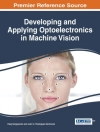The future of manufacturing companies depends largely on their ability to adapt to swiftly changing global conditions. These are exemplified by international com- tition, rapidly growing intercommunication and the increased significance of en- ronmental issues [KLOC98a, ENGE02]. Precision machining with geometrically undefined cutting edges represents a key production engineering technology with high efficiency, security and machining quality. DIN norm 8589 subsumes within the group “machining with geometrically – defined cutting edges” the following material removal manufacturing processes: grinding, honing, lapping, free abrasive grinding and abrasive blast cutting. – chining is carried out in these production methods by means of more or less – regularly formed grains composed of hard substances brought into contact with the material. Of all methods understood as machining with geometrically undefined cutting edges, only grinding, honing and lapping can, strictly speaking, be considered p- cision machining. Free abrasive grinding and abrasive blast cutting, also treated in this book, represent a special group, as they generally cannot bring about geom- rical change in the material.
Table des matières
Principles of Cutting Edge Engagement.- Structure and Composition of Grinding Sheels.- The Machinability of Various Materials.- Cooling Lubricants.- Grinding.- Honing.- Lapping and Polishing.- Special Methods.- Process Monitoring.
A propos de l’auteur
Professor Dr.-Ing. Dr.-Ing. E.h. Fritz Klocke has been Professor of Manufacturing Engineering Technology, director of the WZL Laboratory for Machine Tools & Production Engineering at the RWTH Aachen, and head of the Fraunhofer Institute for Production Technology IPT in Aachen since 1995. A doctorate of honoris causa „Dr. E.h.’ was bestowed upon him by the University of Hannover in 2006. Professor Klocke was CIRP President from 2007 – 2008.












